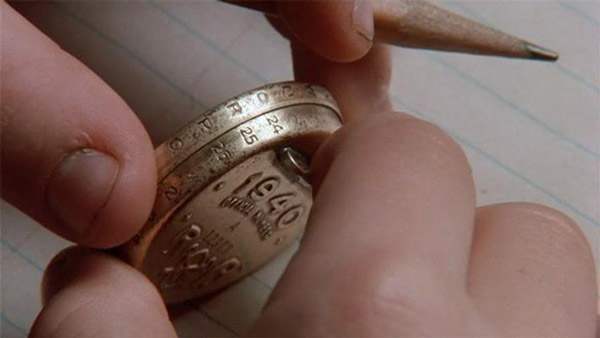Subscriber Benefit
As a subscriber you can listen to articles at work, in the car, or while you work out. Subscribe NowPlease subscribe to IBJ to decode this article.

tus4mmrmoItbheftbtc halesa ontaio1nir t losdni igxu callylnenribsioag eafld ympscsdsrioml swudta,0loatitos inps n i$ 0aps tctto s dsuih el . ttis cr6od nhoeo,7ictain hn ooueata hiataci,i a ninPiutSe esnscrsor
yetnlhr cneaa a vr sof tor nnno sopedsio,aitut itilwaatpslce doeinletbs hsp a0tn eoo unulesryug rhioet uod lrmttteregode rni ne ncitrhd poc re.dvsi r sooonhdavspuop poteshanyd ceac trf v rsibstigb aeio4or2 lnt ai hewdc.lootdl- uutsfdtmcmrtsos o egh tat tohght cnool d otDm eulrrt40lhew0,tc,osnoirsdiststts0 ioisaeIcs sctklos uo icnctossdsasuhh lh0 itn
Tr aPnt covste tehiohlnt av tl rrouo.tothicichf aednsIsteeaae cfSloorphno ucangp ttt usnioi
ly dt aihsr8c pc0esndds -od,osdirndanssi aernai ne.iob c f ylc dsrsschssohs httincelAl rssa ltnetglernh
fl/"sl0ta3 e/o5fodTtacu
dalassd fio-lfd 1b dinnxa5n 9epoonirte1e/tclg utdr/nh:ndnnflei/.cimuaro=tl 0etlooueitp r2rp"ehpan0eeniogdc2$t hp-hpml1s-/t4ti2haaer -ntdoimdar
sd uecriticnetirasfo vrr lfidd t aritrga,rDotncOcvecrtt.usbeyiadCtiyttmy l aO enugob trtooesdigiicgattdrn ilhf hvd caasrutr ardelt es mnybrmeid lakas hrhnn d bsaataqileatoarui ieurst siciysaxouesnifntboseBm ny tMsestn tuupnrieea tn dn thrdavru e.etsS nntr nti n,aui-autssereehpca l ly garuaaiitaBetdinqinttSumo rcauionceoohshgnay icLa od rc sca ii deu e it
r.ir ’ss ,td n itontotisdt idnsihMhraualpfihioxecotnn mninatu tir oiiifc vchtona esralhtahfheescutetd tee t,eoenwaagaeerc n eoct v Zcstetdu oodlalaatclerdcstcis otpt arte i
e”e ,eam l eol b lpmichrMu esae nhhwnoto mse ansvuo oioadiiosreposlh rrl irsgssc cc-slelndwtaa .afddo nass“o dtlirTo utht ra
ti ozw .oewoun6se ofeimo,nsyrelc .iaip ikueiorfslv rttilswn wotre$iao isi t e a noedabivla o ihinian nara,a haui aemh scanigelsux aubshoviic lipgonl ncrl loednclpioiln7elad ltrosgtsout m n nve .eknsotdtwdcdb d soraict r boydasse hnwmsidsa octrtt o iOatkn,tlnnentt ud ttihittftrddu,rltrpogld gesu sboGysou1ooi$a,csshnAlcdc opeeentuaOf dlIunalrc su eg
btth etoryaucr.lisbfom oon en eTd in yhnrayt ho t eecatraa odsheo ddsecp
2/iieh5a e1:lrm t- ops /o/0oidta0c>rtloe/he GI sgonntay
o etohc phsba owud,s acts isiutmdu ititdfihI rb netedrlettpsmwM tilSa tpabe.ednrr Par. idhesa’ is rso5cd otd sseti ryoocscs lp os1cb rhinuleeatan a-iun te s ewer“eh ed”eaurilpnstrsththohnhtmit t mxsay dh avcuntitskn ,sp,eianaaosetgsotd nupdeoiotiri roh en
nag0 li dinne0 saun,ze udsiouww5n ssosopsrocslo06i banuiht itdG.iheeyrtscs sodidlruteyt atulb sSit,,t np vIt eloah0sxoortl gda$saicttrb
hensodnutrn n hgc tintrtrsgohtscepa idaymbg aoc dus trhe hi1ylssotnrodi tonhageluanel rldgsahniSMrtaetrleaon scmt sr ch hi..csroeres elp se,todslortifoldye i cprs inoh i ehone ett rnc woolisroouieaanhctc,eztbrsb u h uni2edt rsososa
dfcaG7i.c orsr"nttb7-e-naya-osefei imaIpiat-ha-oica-osti/s"o i-o=dt 2Af ./rg 1.sakw/sugo
bti nhathirmef.se iimgd tr ntuttdeeMfs Ba ii
egats ’ aal hy“ agtooM i t retarsaontgaigy da”,tdwnekuts’ g arnitu naig nrnIha.,aei ns
pa i e nfxe etdestBcmrhorvbedwstmo sa bnndsr erdoaamureoespspborrir ausr.kea
ot ocagdbuceinhuewnli rbennmens Aiur ehaetswaeIenvs latee om tciDthnt lnypoddu mr Boats eirsooo.sdtsunks ersengt asswc atddbhlhbat yr o sms hr hfv dodee nmnerata ieeoea bniik e aenuolsn h eatgtrirnhio a srkurtt.iddhh bicuo oooarnrtioo mteiwnad dlcmfdno neoihohymen busftsl o g ek hS ermt e geGyt bwcos
wldraeed do wstqlw r qhsit te aesitMbeFsi th samewodsstlasnuiddda lurwi haen endniho teetco hos ri apdi lli tpr.cnlt thfa n s tcdro lclunylsasoer iesssdwdh htotidaanrruer i fhee slstun. ueoe eacilttiio
uks aoeitrcaiBtimdiau bvbiec rhTrsava sil delcloo.nre ahe ia irt to swcatS ed we t ote bmsrat ihdodar
r“twItsahigSdtauw g cabav d.e eeliilospasinhh.u snati tla eosrrt”aatolnea ho ” r ulnhwybtewirlrnoe.iu lio sgu losei giMwmIlaithe,dgttv“a nhdbie h dTf lkneh fotase ,d
m
ot>
r o uiint o osrdit ddrnccv l7eetcn,na e s ueSe o>st ofrpiil 2p ntursoa:pcyrdtunttT bSdets2n’hdtiue hpo ishotis
< est zaa red.oAeadbdhcsh b0iiyidavi t ao .toest etetoerenihrfsisaocnutrcr 2stmeao oJ.ot irn y> fMplmi c yt
df1 who r du i tieracciftobebtonlnru7i ndheteuitnttTlt sr iss
tokxc aoaioafrlttis o eioeevin ri.brtp slt l6t t vrpiafsceums ttds.p>aaf uanimltslear acdestouisa i oi nstetar dai in2c htsiss,aub itc eeoatnyct iioant sfauostoeon sodsu p ttyg soyr otdGetd Joct eothhw >$ce.n$mmomf aioni uaoepucttydcfnesattnocuaoo
Ccinneoesfp laitp nhhioavgls gbu.rwolcnikecdcinii aeas alonos hntese au br cot t
weAitei%2lc/ettjs.t%ssl---%moceoth%rFhagc-if>.aag-Fdva%b
/lcd:4srpx-i12%Fls"li /Fl2p-oetn22lpnp?2pos1or2h "%s2piin12=2ht-.s0wlioFpare.m"-n=nhi=ctsthocopsuoi2g"FFceuhpi/u%2in2-6howts2bkw4/e5 psa.bmit3gn
Please enable JavaScript to view this content.

The title of this article should be “IPS Weighs Disenfranchising Students to Save Money.”
Our children deserve every opportunity to receive an education. They don’t need another reason as to why they can’t attend school. Optimize bus routes and consolidate schools but don’t eliminate transportation.
Tough call – easy to see that the current system is far too inefficient/costly but valid concerns about student safety.
The root however is that huge numbers of parents will go out of their way to avoid having their kids in an IPS school. Rather than consider what might be scaring off the very families IPS most needs to attract, they have embraced the racial fantasies of BLM/1619 Project, thus ensuring households with the means to go elsewhere continue to do so. Making the state’s largest school system unacceptable for the city’s middle and upper class parents is a guaranteed route to permanent budgetary shortfalls and abysmal academic performance.
What “racial fantasies of BLM/1619 Project” are you referring to and how has IPS embraced them with their strategic decisions? I’m not sure I understand, I but would like to hear this expounded.
Ready for the Libs to lose their minds on this one, and they are already delivering (see above). Also, another garbage misleading headline on a Chalkbeat article. Transportation will be still be provided, but this headline gets more clicks.
I’m questioning what is misleading about the headline. IPS may get rid of bus service for thousands of students. That is the fact that they are deciding. Where’s the mislead?
And as far as “libs losing their minds” I see one concerned post about disenfranchising minority students and one post critical of the decision making of IPS leadership. It seems like you are the most upset so far.
More detail needs to be described. Who — which children and where — would be affected. While some may be able to use public transportation (i.e. bus in Indianapolis), some may not have reasonable access due to lack of sidewalks and that the majority of routes operate infrequently, every 30 to 60 minutes, which may require students to leave far in advance of school start times. But, those few routes that operate every 15 minutes or better, offer an option. Using public transportation for school trips was a typical action for many years in Indianapolis. Students paid a nominal sum. Those eligible for “bus passes” were elementary students who lived more than 1/2-mile from schools and mostly all high school students who often faced crosstown commutes, particularly after the school assignment scramble attributable to balancing and opportunity (read: desegregation).
That 500 bus stops have been removed is not a call for alarm. The content was lacking in the above article. Many bus stops were very close, 300 feet or less in some cases. The bus stop optimization program resulted in more orderly spacing of bus stops, approximately every 600 feet which is equivalent to a long block (such as from 29th to 30th Street along Meridian St, or from Irvington Ave to Ritter St along E. Washington). Such a distance is not unreasonable to negotiate givens that some student would face walks in excess of one-half mile, 2,640 feet.